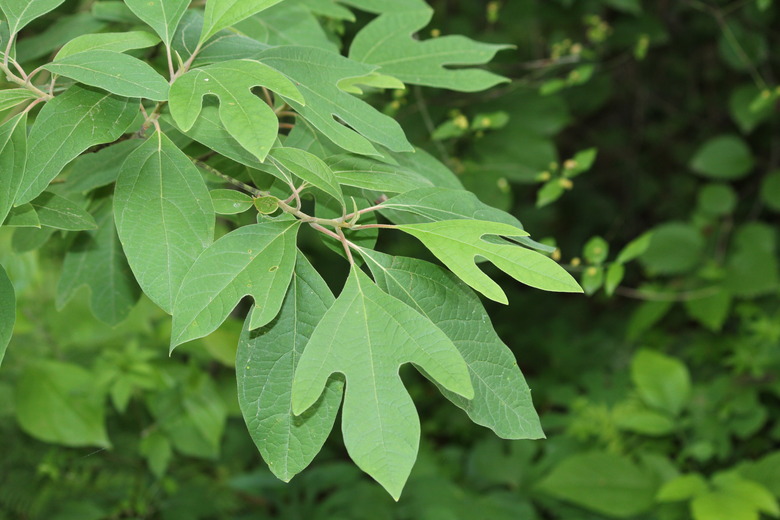How To Find Sassafras Trees
Sassafras albidum, commonly known as the sassafras tree, is a medium-sized tree that is found across the eastern half of the United States. Sassafras trees grow about 60 feet tall and usually have a bushy appearance due to numerous suckers that emerge around the trunk and the twisting growth of the branches. Trees in the southern part of the species' range generally grow taller than trees in the north. By sight, the trees are most readily identified by their smooth, lobed leaves. The leaves, bark and roots give off a sweet, spicy scent when crushed that is reminiscent of root beer, vanilla and oranges. Sassafras extract was used for centuries in medicines, beverages, foods and perfumes.
Where to Look
Where to Look
Sassafras trees grow throughout most of the eastern United States and west of the Mississippi River into Louisiana, Missouri, Arkansas, and eastern Texas and Oklahoma. They often spring up in abandoned fields as a pioneer species. They grow at forest edges, in hedgerows, in open fields and along roadsides.
Identifying Sassafras Leaves
Identifying Sassafras Leaves
The leaves of the sassafras tree are distinct due to their rounded edges and lobed shape. Leaves may appear as unlobed ovals, mitten-shaped with a large lobe and a smaller "thumb" lobe or with three lobes. The leaves have no teeth or sharp points and grow 4 to 6 inches long. The surface of the light green leaves, both above and below, is slightly fuzzy. Crushing the leaves releases a sweet, aromatic fragrance. Snapped twigs emit a more pronounced scent than the leaves.
Sassafras Root and Bark
Sassafras Root and Bark
The bark of mature sassafras trees is thick with deep furrows. The exterior is a dull grayish brown, while the inner bark is a deep reddish brown, like cinnamon. The highest concentration in aromatic compounds are found in the inner bark and the roots. Tea can be made by steeping dried pieces of sassafras root in boiling water. Young roots can be dug without harming the tree due the large, central taproot of sassafras trees. Most sassafras oils and extracts come from the roots.
Uses of Sassafras
Uses of Sassafras
Sassafras oil produced from the bark and roots was long used in folk medicine as a tonic to treat a variety of ailments. Widely used by Native Americans, it was also popular among settlers and shipped back to England. The bark covering the sassafras roots was used to make tea and flavor root beer and candy. In Cajun cuisine, file powder comes from dried and ground leaves of sassafras trees and is used to thicken gumbo and other stews. The oils extracted from the roots and bark are also used in perfumes and soaps. In the 1960s, researchers found that safrole – a key component in sassafras products – caused cancer in laboratory rats. Commercial food and beverage products containing sassafras extract or oil can only be sold if the safrole has been removed.
Cite This Article
MLA
Mentzer, A.P.. "How To Find Sassafras Trees" sciencing.com, https://www.sciencing.com/sassafras-trees-7787850/. 22 November 2019.
APA
Mentzer, A.P.. (2019, November 22). How To Find Sassafras Trees. sciencing.com. Retrieved from https://www.sciencing.com/sassafras-trees-7787850/
Chicago
Mentzer, A.P.. How To Find Sassafras Trees last modified March 24, 2022. https://www.sciencing.com/sassafras-trees-7787850/
